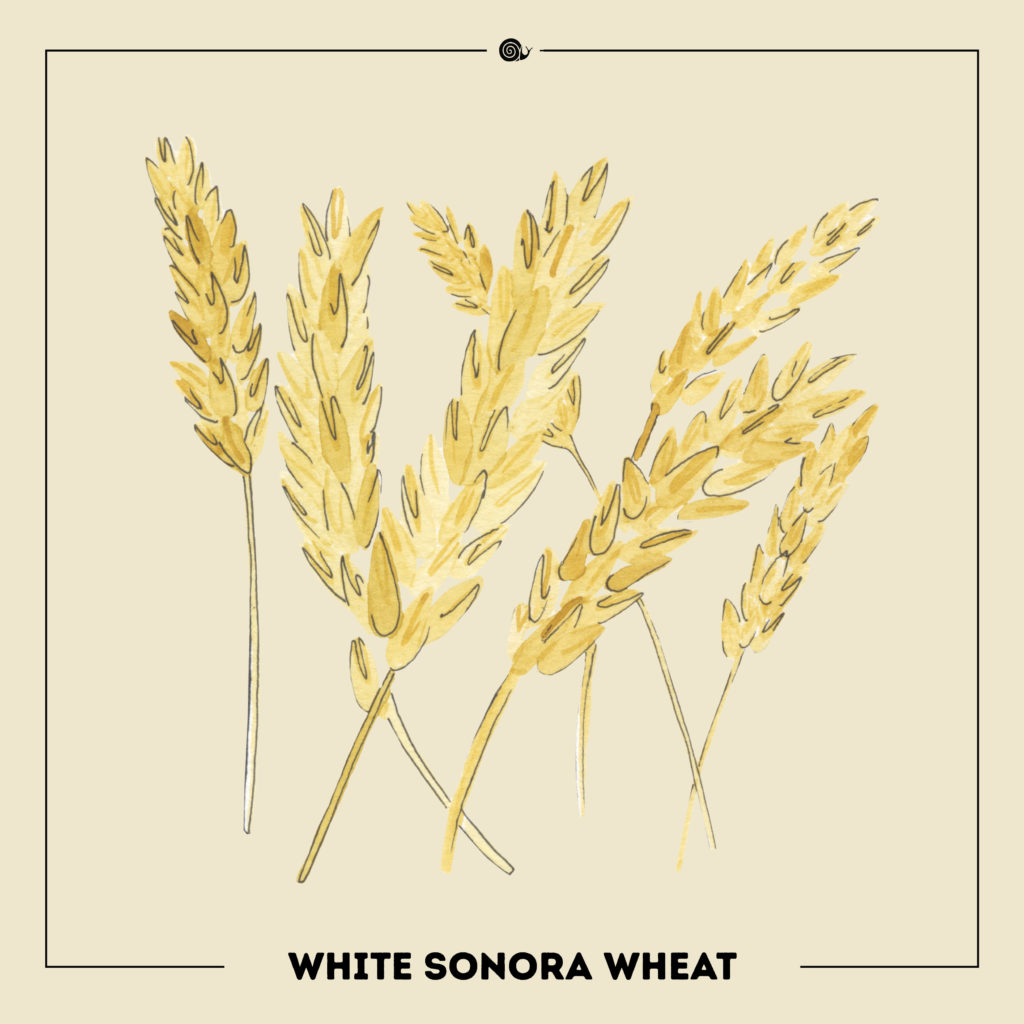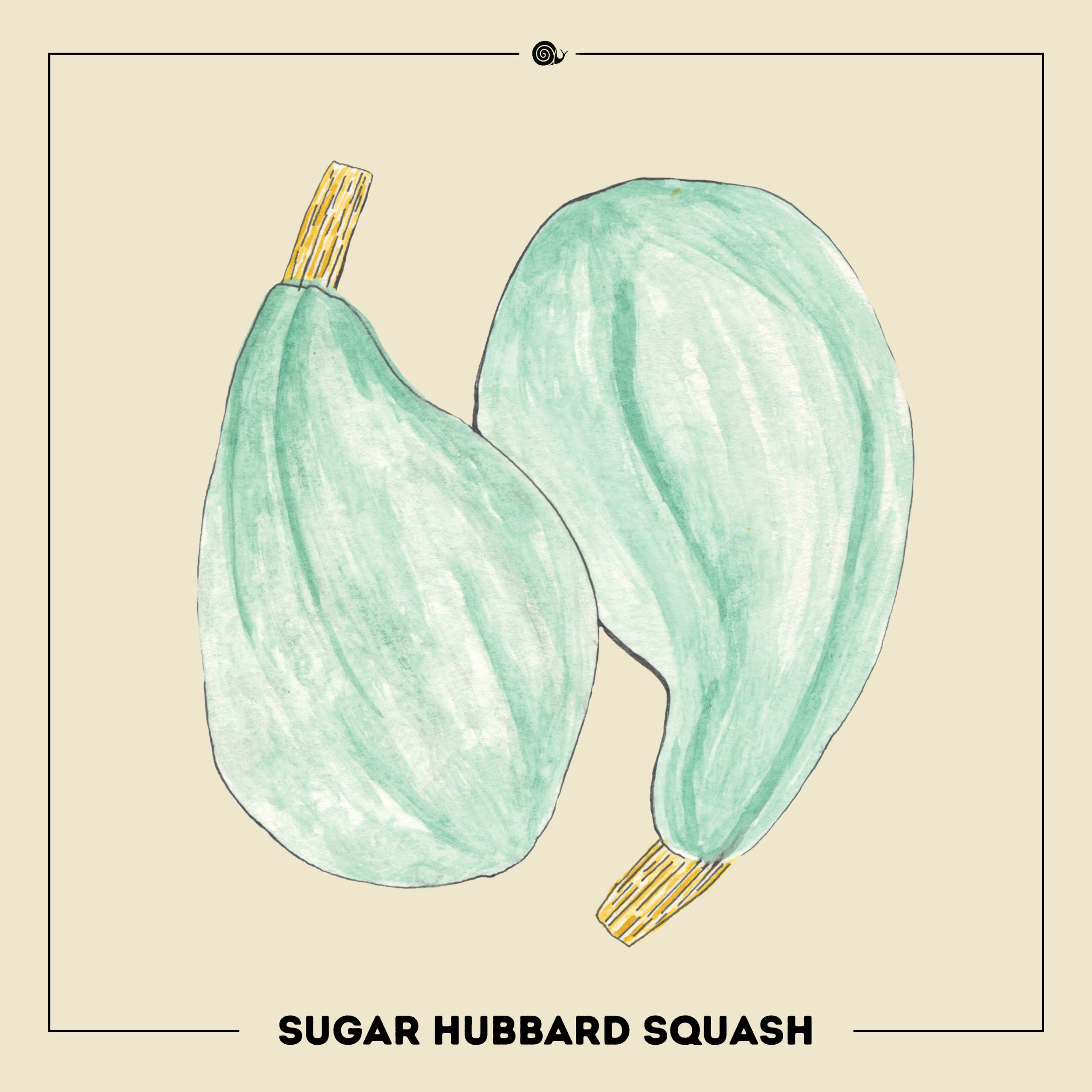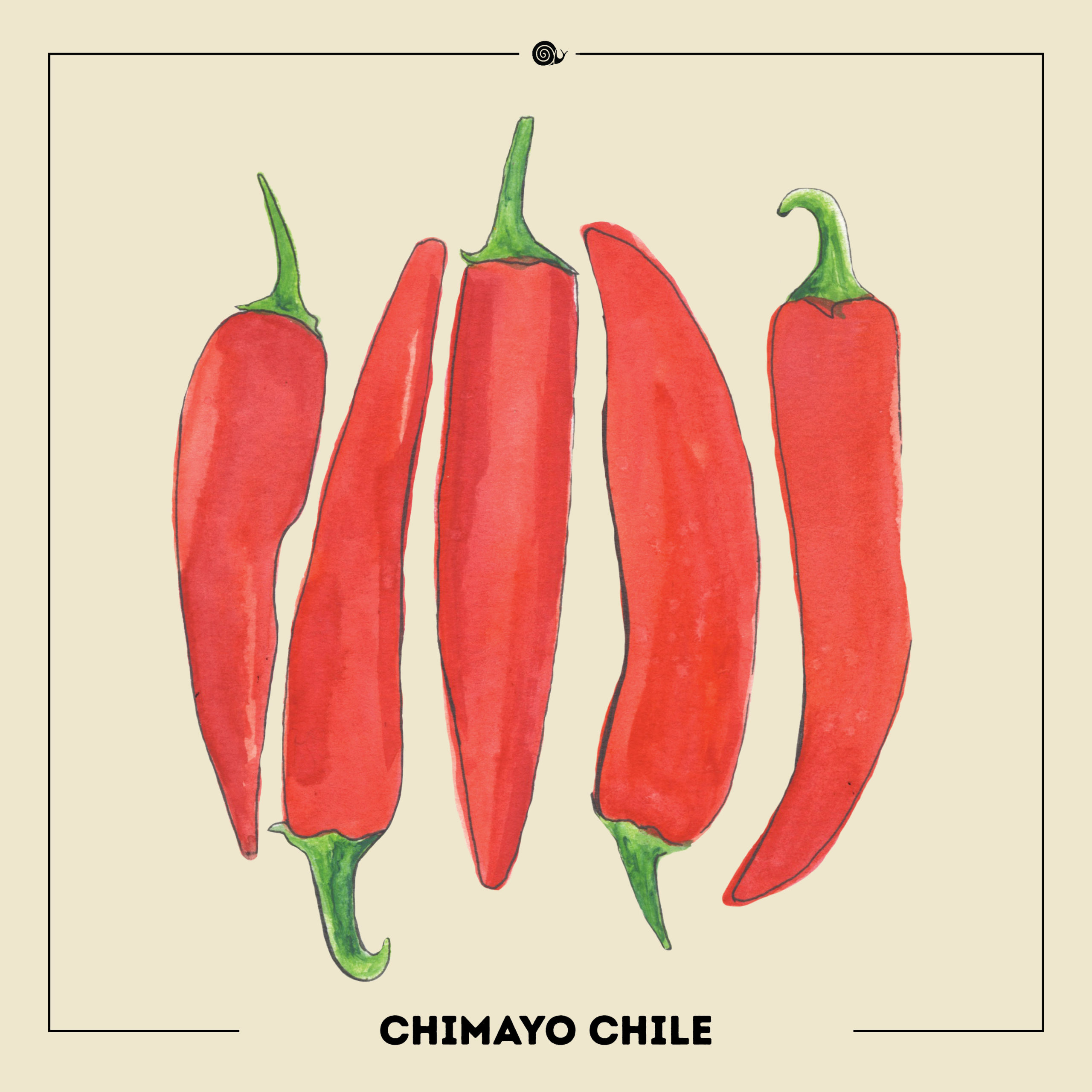White Sonora Wheat
“Here’s another very old wheat, dating to the time before wheat was ‘improved.’ First brought to Arizona and the Southwest by Spanish missionaries in 1691, the “soft” grains are rounded and pale reddish in color. They make a stretchy dough that was instrumental in the development of the flour tortilla. White Sonora was the main variety available in the west, including California, up to the Civil War. This variety has recently been the object of a commercial resurgence in the Southwest, and is another type that is well tolerated by most people who suffer from celiac disease or wheat allergies. Drought tolerant, disease resistant, and highly adaptable.” —Baker Creek Heirloom Seeds
 White Sonora Wheat is also known by the names Kno Wheat; Trigo Flor (Spanish), Flor de America, Trigo Mota or Sonora Blanca; and Olas Pilcan (Pima). It is a soft, white winter wheat that has become adapted to the southwest coast of the United States; specifically the semi-arid climates of the Sonoran Desert in California and Arizona. White Sonoran Wheat is believed to have been brought to the Sonoran Desert by Padre Lorenzo de Cardenas between 1640 and 1650. Cardenas provided the seed to the Eudeve people, who began to propagate the wheat near the rural village of Tuape, Sonora, not far from the present-day United States-Mexico border.
White Sonora Wheat is also known by the names Kno Wheat; Trigo Flor (Spanish), Flor de America, Trigo Mota or Sonora Blanca; and Olas Pilcan (Pima). It is a soft, white winter wheat that has become adapted to the southwest coast of the United States; specifically the semi-arid climates of the Sonoran Desert in California and Arizona. White Sonoran Wheat is believed to have been brought to the Sonoran Desert by Padre Lorenzo de Cardenas between 1640 and 1650. Cardenas provided the seed to the Eudeve people, who began to propagate the wheat near the rural village of Tuape, Sonora, not far from the present-day United States-Mexico border.
The wheat was used in the creation of communion bread when it was first introduced to the region, but soon became a staple food for the region’s inhabitants. The flour was used to make masa (dough) for tortillas, reflecting the presence and influence of Mexican culture in the growing area. The wheatberry (the entire unprocessed wheat kernel) was also used in traditional dishes such as pinole and posole. Now, the wheatberry is sometimes used to make wheat beer.
White Sonoran Wheat is planted and sprouts in the fall, from approximately September to December, before any freezing occurs. Then, the plant over-winters until spring, at which point it continues to grow and mature until it is ready for harvest in July. It is a hardy plant, resistant to drought, cold, disease and rust (a plant fungus). The grain is round-seeded and pale-colored with a tint of pink. The wheat chaffs (or “glumes”) are reddish brown and protect the seeds inside. White Sonoran Wheat is relatively easy to grind and ideal for using in pastry due to its low protein content. When milled, it produces a fine, white flour. White Sonora wheat is also useful in farming as a rotational or cover crop, used for renewing the nitrogen and minerals in the soil.
The Pima people began cultivating the variety soon after its arrival to the region and became the first food exporters in Arizona in the 19th century when they began sending the product eastward. At that time, Sonoran Wheat production was measured in millions of pounds, making the central valleys of California and Arizona ‘America’s breadbasket.’ The region, the wheat and its exporters were credited with preventing the starvation of both Union and Confederate soldiers during the Civil War.
White Sonoran Wheat also instigated a shift in the use of flour tortillas over corn tortillas in what is considered ‘Borderlands cuisine,’ referring to the shared food culture of the northwest Mexico and the southwest United States. Many of the foods associated with that cuisine—like burritos and chimichangas—also owe their existence to White Sonoran Wheat production and the resulting flour tortillas.
The wheat was used as part of gene selection for the Sonora 64, a plant bred by the Nobel Prize winning Norman Borlaug and one of the first plants in the Green Revolution. The new variety lacked the distinct and pleasing taste and texture of the White Sonoran Wheat. The development of the Sonora 64 spurred the commercial decline of the White Sonoran Wheat in the 1970s and 1980s, as there was confusion amongst farmers concerning the differentiation between the new Sonora 64 and the heritage variety. This caused the near disappearance of the crop from the landscape.
However, the heritage wheat persisted in some rural villages and renewed efforts to understand and preserve the rich cultural and regional history surrounding White Sonoran Wheat in recent years inspired a resurgence of the crop. The flour is particularly favored by artisanal bakers thanks to its rich, sweet, earthy and nutty flavor — characteristics typically found in whole wheat flours, but with the lightness and low protein levels of a white flour.
Sowing and Growing
See your seed packet for planting instructions!
Best practices and timing for planting any variety will depend on your growing zone and your frost dates. Put your zip code into the Farmer’s Almanac Planting Calendar to see expected frost dates for your where you live and helpful notes about planting indoors/outdoors, and when to do which one!






I am curious to know where I can buy the heritage Sonoran white flour to make the Sonoran tortillas that I grew up eating. I certainly want to avoid the Sonora 64. Do you have any recommendations for reputable purveyors over the internet, as I am now 1,000+ miles away from my beloved Sonora Arizona. Thank you!
where can I buy the grain or the flour
You can buy the grain at https://mockmill.us/
You can buy the flour here.
https://breadtopia.com/product-category/grains-flours/stone-ground-flour/whole-grain-flour/
You can also buy from our non-profit, Honore Farm and Mill in CA—dedicated to preserving heritage wheats.
I was reading a vintage book, “Camp and Trail,” (Doubleday Page & Co: 1915) by famous outdoors author and then-California resident, Stewart Edward White, in which he mentions a hot cereal, Germea, along with Cream of Wheat, as being particularly nutritious. It prompted me to research Germea, which led me to several vintage advertisements, one of which states that Germea is [or was] “Prepared from California White Wheat, this unrivaled health food contains 95 per cent. of solid nutriment.” Germea was sold by The John T. Cutting Company, 122 Davis St., San Francisco, Cal. and 20 Desbrosses St. New York. I wonder if the California White Wheat mentioned in the ads and which comprised Germea is in fact White Senora Wheat. Link to advertisement: https://www.periodpaper.com/products/1895-ad-germea-breakfast-cereal-john-t-cutting-20-desbrosses-street-nyc-food-214824-ytt2-036
Thank you for using Pima, but Pima is a word not many O’odham use today. Culturally were are Akimel O’odham or River People, living along rivers, so farming was a natural. (Our cousins in southern Arizona are the Tohono O’odham, Desert People. There are no running rivers or streams on their land.) Reclaiming our language and history begins with correcting labels; Akimel O’odham.
Thank you for sharing this with us – the article has been edited!
Is White Sonora Wheat good for making cinnamon rolls? It sounds like it would make excellent bread, but the low gluten content, as well as it being considered a “soft” grain, makes me think using it to make dough won’t be tacky enough for cinnamon rolls.
Yes! The secret seems to be using the “00” type of milled flour as well as potato flakes to add a bit of starch to keep them fluffy. The book the Miller’s Daughter by Emma Zimmerman has a cinnamon roll recipe in her Sonora Wheat section!
I have Sonora whole berries back in stock on my website: http://www.vreseis.com in the shop section. I grow it as a rotation with my cotton breeding to build the soil and sequester carbon. I fell in love with it when Monica Spiller was increasing seed stock from the seed bank in 2001.